User Centred Design in the Built Environment
Presenters: Jen Barling, Monique Jack, Access and Inclusion Consultants, Funktion
Flash Talk Session
In our presentation, we explore the benefits of a using an inclusive user centred design approach in the built environment. We’ll discuss how we identified accessibility and inclusive performance requirements across a range of project types during different stages of the design process.
Investigating the needs of the people you’re designing for helps to identify opportunities that improve the fit between end-users and their environment. Gathering insights on how people interact with their environments and undertake everyday activities can inform and direct better design and business decisions.
Design can create environments, buildings, spaces and products that enhance or restrict a sense of belonging, increase or reduce feelings of security, stretch or limit boundaries, promote or reduce mobility and improve or damage health. Design can remove real and imagined barriers between communities and promote engagement, independence and possibility.
We believe in the power of design to make a difference and to make better experiences for everyone – redefining our experiences of moving, seeing, hearing, touching and smelling. Design that considers the needs of a broad range of people can enable health, wellness and social participation.
